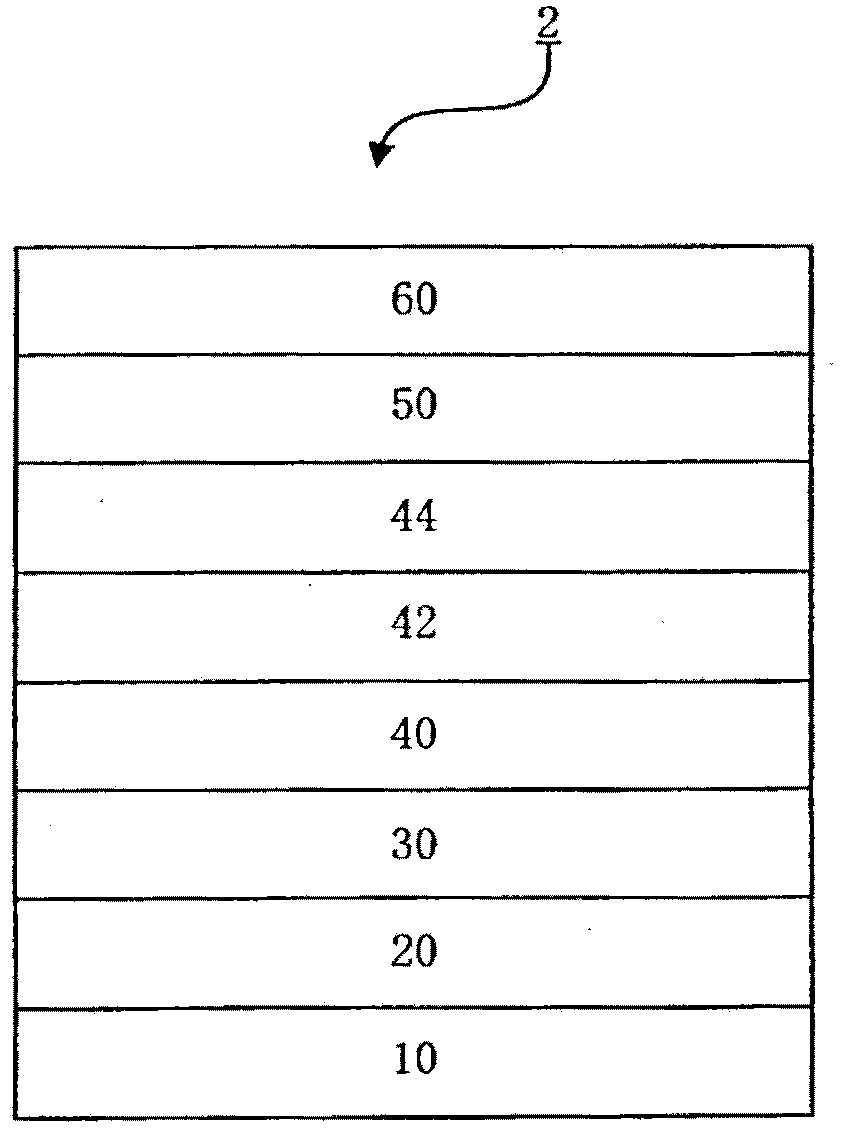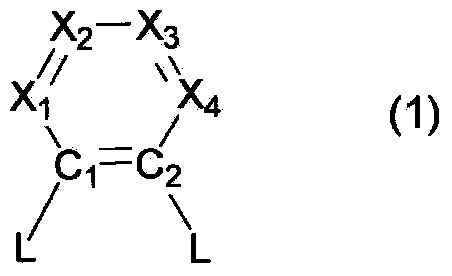Material for organic electroluminescent elements, and organic electroluminescent element using same
An unsubstituted, carbon number technology, applied in the field of organic electroluminescent elements, can solve the problems of lower triplet energy and lower charge transport
- Summary
- Abstract
- Description
- Claims
- Application Information
AI Technical Summary
Problems solved by technology
Method used
Image
Examples
Embodiment
[0222] Hereinafter, although a synthesis example and an Example are given and this invention is demonstrated more concretely, this invention is not limited at all by these examples.
[0223] [Materials for Organic Electroluminescent Devices]
Synthetic example 1
[0224] Synthesis Example 1 (Synthesis of Compound (1))
[0225] (1) Synthesis of compound (1-a)
[0226] [chemical 15]
[0227]
[0228] 84.10 g (500 mmol) of dibenzofuran and 500 ml of dichloromethane were added to the three-necked flask to dissolve them, and cooled to 0° C. with ice water. A solution of 52.5 ml (1025 mmol) of bromine / 200 ml of dichloromethane was added dropwise thereto over 30 minutes. After that, it stirred at 0 degreeC for 2 hours, left to stand at room temperature, stirred for 3 days, and completed reaction. After the reaction, sodium thiosulfate / sodium hydroxide aqueous solution was added to deactivate the remaining bromine. It was transferred to a separatory funnel, and after recovering the dichloromethane phase, it was extracted several times from the aqueous phase with dichloromethane. The solution was dried over anhydrous magnesium sulfate, filtered, passed through a short column of silica gel, concentrated and dried completely. This was recr...
Synthetic example 2(
[0246] Synthesis Example 2 (Synthesis of Compound (59))
[0247] [chemical 20]
[0248]
[0249] Under a nitrogen atmosphere, add 15.3g (40.6mmol) of compound (1-c), 4.00g (16.9mmol) of 2,3-dibromopyridine, 60ml of a 2M aqueous solution of sodium carbonate, 160ml of toluene, and 60ml of ethanol into a three-necked flask. To this mixed solution was added 0.976 g (0.845 mmol) of tetrakis(triphenylphosphine)palladium, and the mixture was refluxed for 16 hours.
[0250] After the reaction, it was cooled to room temperature, extracted with dichloromethane using a separatory funnel, dried over anhydrous magnesium sulfate, filtered, and concentrated. The filtrate was purified with a short column of silica gel (developing solvent dichloromethane to dichloromethane:ethyl acetate=4:1) to obtain compound (59). Yield 4.50 g, 36% yield.
PUM
| Property | Measurement | Unit |
|---|---|---|
| thickness | aaaaa | aaaaa |
Abstract
Description
Claims
Application Information
 Login to View More
Login to View More - R&D
- Intellectual Property
- Life Sciences
- Materials
- Tech Scout
- Unparalleled Data Quality
- Higher Quality Content
- 60% Fewer Hallucinations
Browse by: Latest US Patents, China's latest patents, Technical Efficacy Thesaurus, Application Domain, Technology Topic, Popular Technical Reports.
© 2025 PatSnap. All rights reserved.Legal|Privacy policy|Modern Slavery Act Transparency Statement|Sitemap|About US| Contact US: help@patsnap.com



